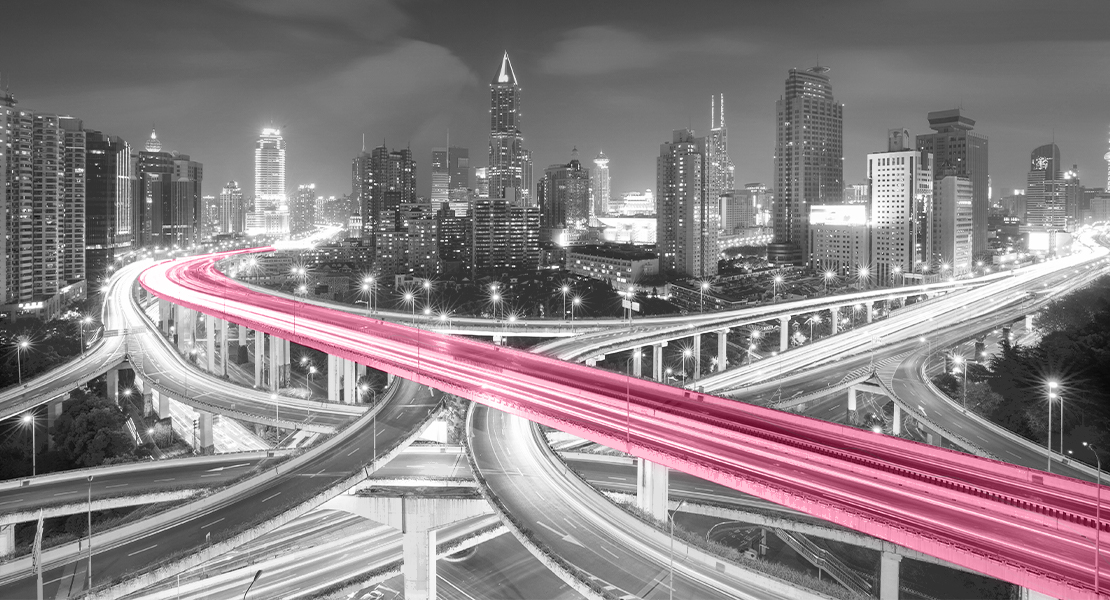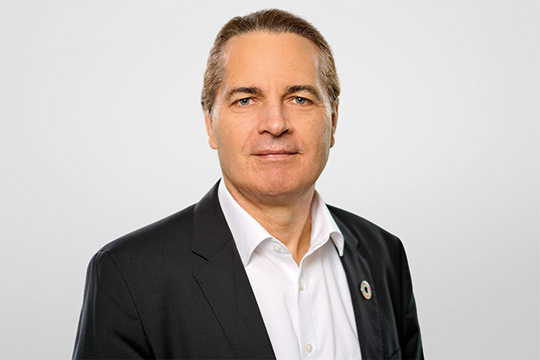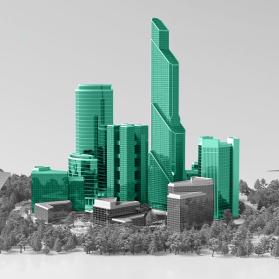Smart cities are supposed to shape the digital future. But what exactly is behind this and who benefits from such a smart city? The "smart parking" use case is seen as an important pillar of a smart city. In the future, the navigation system will automatically guide drivers to the parking space they have reserved in advance, thus saving time, fuel and, above all, nerves. Before such a solution can be implemented in a standardized way, it is necessary to consider the integration of all services in the overall concept of a smart city.
A "smart city" describes a development concept for cities to make them more efficient and technologically advanced. For a city to become "smart" now, it uses IoT services (Internet of Things) to network, control and monitor the use of sensors and actuators located on cameras, vehicle detectors, traffic lights, but also loading areas, heating meters or medical devices as intelligently as possible. The concept aims to save costs, time and energy in order to improve the quality of life of citizens, contribute to climate protection and ultimately also to create an advantage in the global competition between cities. Issues such as globalization, demographic changes and climate change are also driving the development of smart cities.
Smart city solutions are being developed for various city functions, such as in traffic, transport & logistics, education, healthcare or public safety. However, a smart city must not be understood as a (technical) platform that contains individual services (such as smart parking) as island solutions. It is defined by the networking and connectivity of the individual components or solutions to form a holistic construct. The art lies precisely in bringing together the individual "smart" solutions on a central platform, networking them with one another and operating them centrally.
Stakeholders in the Smart City
Three different interest groups play the most important role in the smart city:
First, the "users," such as citizens, residents and tourists of a city who want an improved quality of life. Companies can also benefit from smart city solutions. For example, "Smart Habour" networks the entire logistics in a port, optimizes goods routes and leads to faster transport and shorter storage times. But companies also benefit from intelligent power, heat and water distribution as well as virtual-real collaboration of mobile and fixed workplaces.
The second player is the providers, i.e. vendors and service providers. They provide the technologies, applications, infrastructures and networks. In addition, they place their products in the smart city project in order to be able to realize revenues and sales as well as lasting customer relationships.
Thirdly, the respective city administration is decisive: For example, it wants to increase energy efficiency and use resources and the available budget more efficiently. It definitely has to involve the citizens in the development of a smart city in order to clarify acceptance as well as the design of the services.
Smart parking as a central use case of the smart city
Who hasn't spent a long and desperate time looking for a suitable parking space in a city? Smart Parking now aims to avoid this stress by displaying free parking spaces in real time and offering the option of reserving and, if necessary, paying for the desired parking space in advance. The navigation system automatically guides the driver there. The user saves time, money and gasoline, and the city also benefits from reduced traffic and exhaust pollution. This is the basic outline of the use case.
In order to implement a solution that is as standardized and sustainable as possible, the "big picture", i.e. the complete infrastructure of smart city applications, must be clearly defined in advance. For the concept of a central and uniformly networked platform to work, the smart parking solution must be provided to the user as a service on a modular smart city platform. Ideally, therefore, a service delivery platform is used that accepts new services/applications in a standardized manner and manages and operates existing ones. These services/applications are then available to users on their end devices (smartphone and tablet). The basic services required for the applications (e.g., identity management and billing) are also located on this central platform and can be used for each service.
However, to enable a central platform, data storage must also be centralized so that each service can access the same data with the appropriate authorization. Thus, data analysis is also centrally located on the platform and is the same for every application. If an application has an individual data request, it can be sent to an analysis tool provided by the central platform. The tool then returns the requested data to the application.
A central and uniform platform interface must therefore be created for all applications, services and modules, which users can access. This interface can also provide access to several platforms that are transparently connected for the user. In the future, however, more applications, modules and services will be added, which is why the platform must be scalable in order to meet the growing demands for computing power, capacity and increasing access numbers. Such a platform must therefore be planned with an eye to the future in order to avoid long loading times or even a collapse of the platform due to high access numbers and data volumes at a later date. The following questions must therefore be asked:
- Is the platform that has been developed scalable enough?
- In other words, can it withstand the high and simultaneous accesses or does the high access affect the performance of the platform?
- How large is the amount of data coming onto the platform?
- What latency is acceptable for data preservation and transport, are existing technologies sufficient for this or do new technologies need to be implemented?
- Are data security and privacy sufficiently taken into account?
With these aspects in mind, an idealized picture of a smart city platform (see Figure 1) and its architecture was created, on the basis of which further smart city solutions can be realized and integrated in the future.
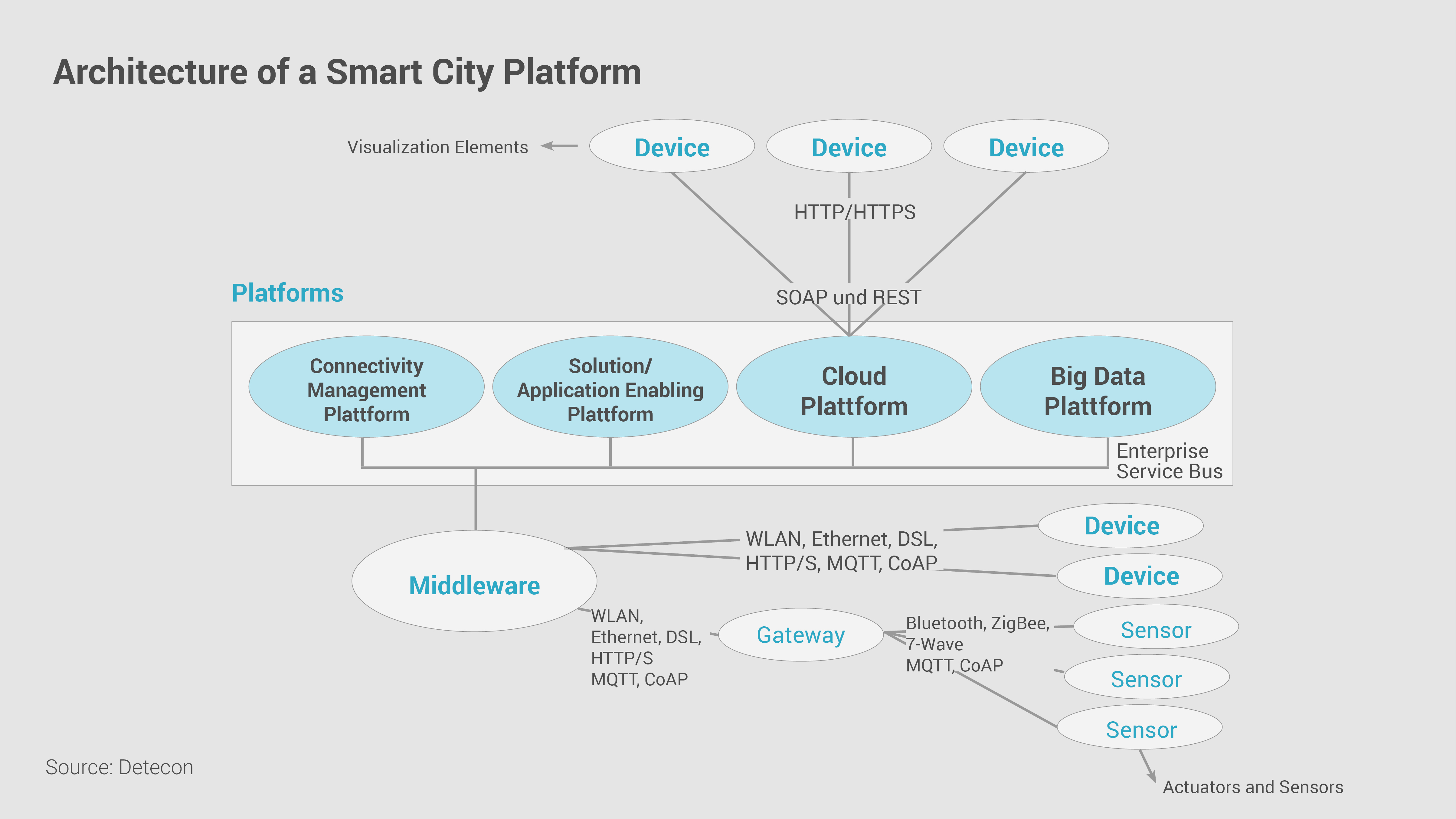
Particular attention is paid to data security: In times of various wiretapping and data security scandals, the issue of data security is a top priority, especially for end users, and should not go unnoticed, particularly in centralized data storage. Central data storage is one of the greatest strengths of a smart city, but also its greatest weakness in the event of misuse. If no corresponding data security is guaranteed, the end user will tend to be skeptical about a smart city or even reject it.
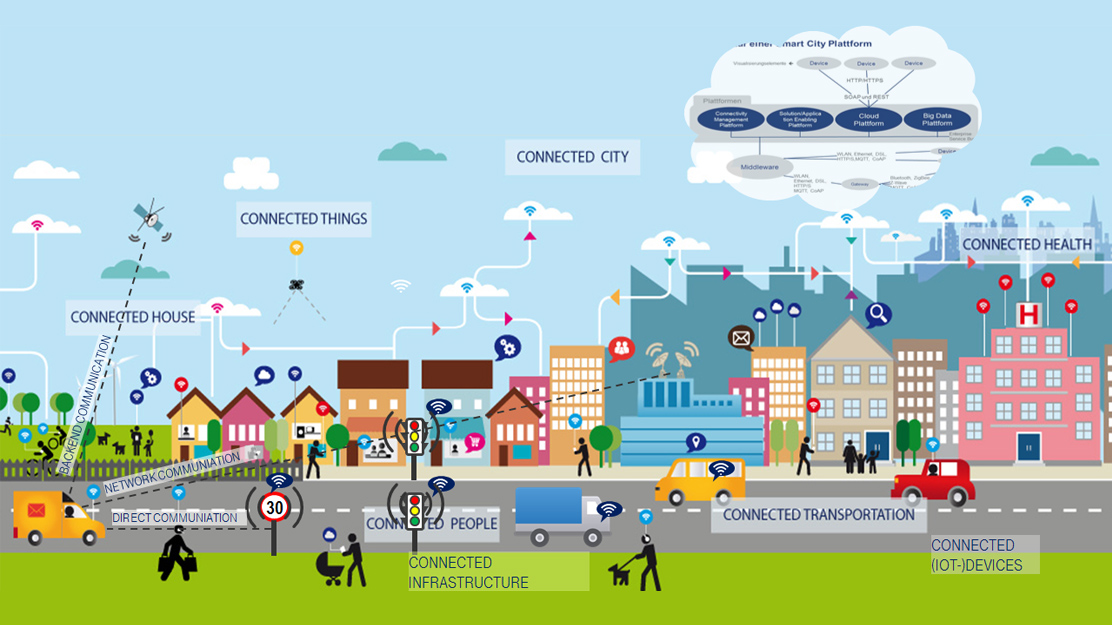
High potential is certain
Smart cities form the digital future. This means that more smart city projects will be integrated into cities in the future. According to an analyst study, the market is expected to be worth around $3.3 trillion[1] in 2025 and offer high revenue opportunities for telecommunications, service and product providers as well as cities and municipalities.
It is clear that the basic idea of a networked city and the realizations of individual use cases in such a platform will play a major role in the digital future. With the realization of a smart city or individual use cases, we are moving step by step further into a digital future and realizing the idea of a completely networked and intelligent city.

